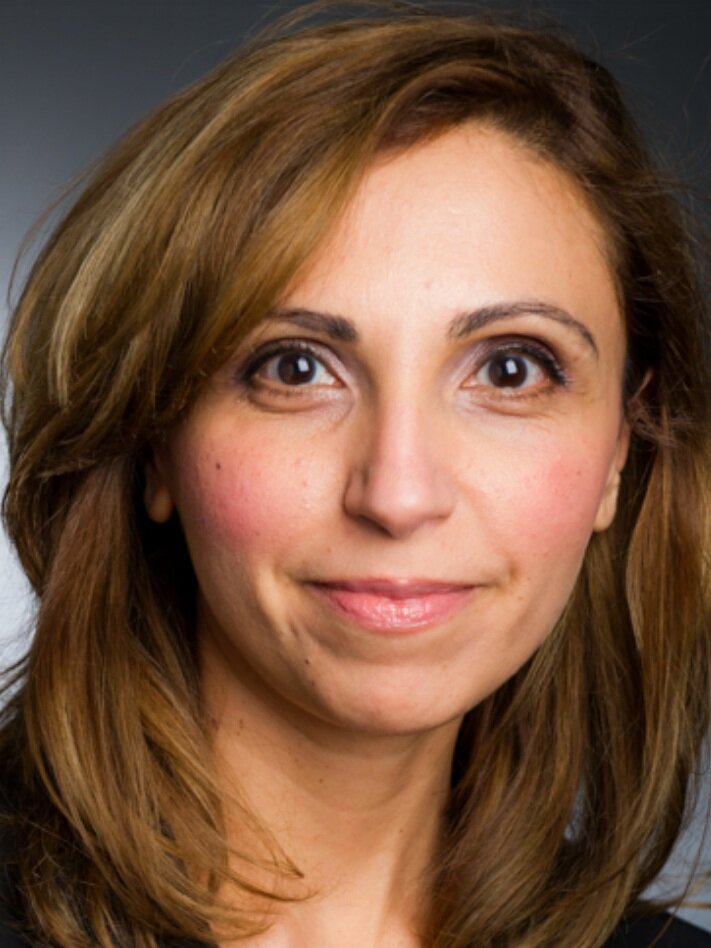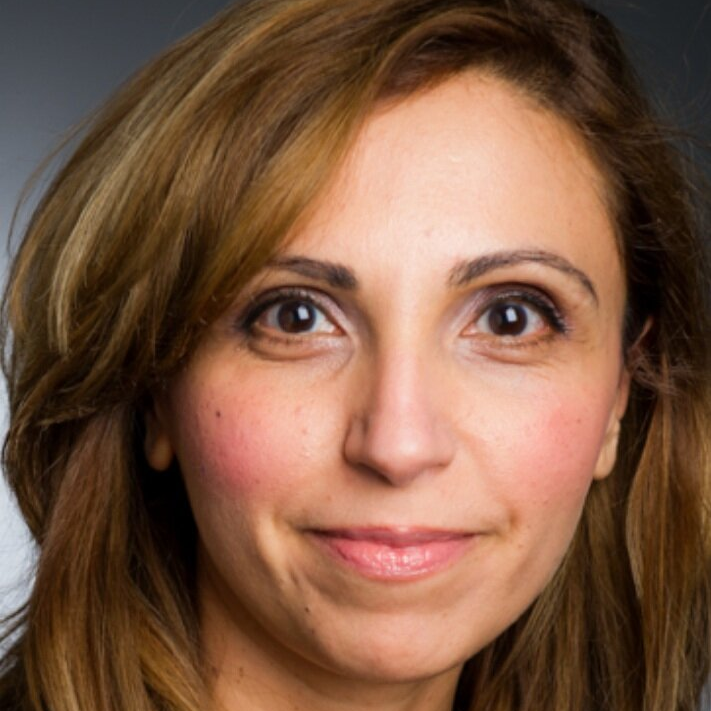Irene Ghobrial, MD
Multiple Myeloma Treatment
Dr. Irene Ghobrial is an experienced hematologist and oncologist who specializes in myeloma. In this interview with The Patient Story, Dr. Ghobrial talks about treatment for those with MGUS, smoldering, and active myeloma, and where she thinks research is headed.

- Name: Dr. Irene Ghobrial, MD
- Roles
- Clinical Researcher
- Professor of Medicine
- Experience: ~15 years
- Professor of Medicine, Harvard Medical School
- Director, Clinical Investigator Research Program
- Fellowship
- Mayo Clinic, Graduate Medical Education, Hematology & Oncology
- Residency
- Cairo University School of Medicine, Pediatrics
- Sinai-Grace Hospital of Detroit, Internal Medicine
- MD – Medical School Education
- Cairo University School of Medicine
- Approach with patients: Unique approach for each patient in order to prevent disease progression
We’re trying to develop better targeted therapies so we’re not just using myeloma drugs earlier.
We’re actually trying to develop what’s called prevision intervention which are new therapies, vaccines, and other ways to make the immune system stronger so it can prevent progression without any chemotherapy.
- Can you introduce yourself?
- Can you talk about The Promise Study?
- What does the treatment look like for someone with MGUS?
- What about treatment for smoldering myeloma?
- Are you curing people before they have active disease?
- What does it mean for someone to be high-risk?
- What other tests are you working on?
- Can you make a distinction between MGUS, smoldering myeloma, and active myeloma?
- Where do you see the research going next?
- What’s your advice for someone who is newly diagnosed with smoldering myeloma?
Can you introduce yourself?
My name is Dr. Irene Ghobrial. I’m a professor of medicine at the Dana-Farber Institute and Harvard Medical School. I’ve been here for about 15 years.
Over the last few years, we’ve said multiple myeloma is a cancer where treatment doesn’t start until a patient is symptomatic. These symptoms are lytic lesions, fractures, anemia, and kidney failure.
It didn’t make any sense. We were all trained this way. But for any other cancer, it’s not like that. If you have a woman with early breast cancer, you never tell this woman, “Wait until you have metastasis everywhere.”
At Dana-Farber, we’ve said, “Why don’t we change that?” We are finding better biomarkers and developing clinical trials for earlier intervention and prevention of precursor conditions like Monoclonal Gammopathy of Undetermined Significance (MGUS) and smoldering myeloma.
Can you talk about The Promise Study?
We expanded that to start the first screening study. It’s called The Promise Study. We got 10 million dollars to start the first screening study in the US that looks for myeloma in individuals who are at risk.
Those at high risk are African Americans and first-degree relatives of those who have myeloma.
We’re screening 50,000 individuals. We’re trying to encourage people to sign up online. It’s really simple. They get a kit, and take it to a lab. They take care of the rest. If they’re positive, we call them and help them. If they’re negative, of course, we let them know.
The hope is that we screen early, prevent early, and in the future, we don’t even diagnose myeloma. The goal is to always prevent it early.
»MORE: What is multiple myeloma?
What does the treatment look like for someone with MGUS?
If they are low-risk, we don’t want to treat them. We just observe them, and we try to figure out why their myeloma isn’t progressing and learn from that to help others.
Maybe there is something in their immune system that is so good that it’s preventing the disease? Is there something in the early tumor cells that we can understand?
For higher risk MGUS, we have an antibody treatment called Daratumumab. We have more studies coming along.
What about treatment for smoldering myeloma?
For smoldering myeloma, we have multiple clinical trials including active myeloma treatment, but we’re just starting it earlier. If someone is extremely high-risk, then we go ahead and start them even if they have smoldering myeloma.
Are you curing people before they have active disease?
The word cure is very hard. We don’t have evidence that we have cured anyone, but we are definitely delaying progression.
Instead of having fractures in two years, can we maybe prevent them for 10 to 15 years. In that case, hopefully we’ll have even better drugs and options at that point. The hope is to cure people, but we’re not there yet.
What does it mean for someone to be high-risk?
Currently, the markers are all tumor markers, meaning your M-protein is very high, your light chain ratio is high, or your cancer cell count in your marrow is high. Of course if your tumor cells are high, you are at high risk, but there are people whose numbers aren’t that high who progress really fast.
We’re developing better genetic markers to find out just how high someone’s risk is based on more than just tumor cell count, but more biologically.
We’re trying to see if they have a bad cytogenetic abnormality or bad DNA changes that predict whether the cells like to proliferate more quickly.
We already did something called next generation sequencing with 200 patients. We have data already that shows those patients who have certain markers would progress much faster. We’re ready to put that in publication.
We’re hoping this would be a test we can provide clinically so people can find out at their own physician’s office if they have those markers and be labeled as high-risk in the future.
What other tests are you working on?
We have something called liquid biopsy where instead of doing it as a bone marrow biopsy, we test the blood sample. You can test all those markers in the blood.
That would be much easier because the last thing you want is multiple bone marrow biopsies for patients. Hopefully, we can just use the blood in the future for testing.
Because MGUS and smoldering myeloma have minimal DNA in the blood, we’re working on better technologies that can detect in a much more sensitive way. We still have some work to do before those tests and screenings can be launched to patients.
Can you make a distinction between MGUS, smoldering myeloma, and active myeloma?
Active myeloma is characterized by four criteria. Those are hypercalcemia, anemia, lytic lesions, and renal failure. We have a few more now like having a high tumor burden or having lesions on the MRI. Something like this would be considered active myeloma and should be treated.
Anything before that would be a precursor condition. The difference between MGUS or smoldering myeloma is having 10% of plasma cells in the bone marrow. Less than 10% is MGUS, and more than 10% is smoldering.
The chances of progression are very different. For MGUS, it’s a 1% chance per year. For smoldering, it’s a 10% chance per year.
Where do you see the research going next?
First, we need to develop better biomarkers. We’re not there yet. This is just the first step. We’re trying to understand a lot of different things.
We’re trying to develop better targeted therapies so we’re not just using myeloma drugs earlier, but we’re actually trying to develop what’s called prevision intervention which are new therapies, vaccines, and other ways to make the immune system stronger so it can prevent progression without any chemotherapy.
The hope with that is that they will preventative and non-toxic. We’re hoping to make the screening study the standard of care where you go to the doctor at age 40 or 45 and get screened for myeloma.
We’re trying to understand why certain families have a higher chance of myeloma, why African Americans have a higher chance, and whether what we eat and the microbiome plays a factor.
What’s your advice for someone who is newly diagnosed with smoldering myeloma?
First, I would say go see a specialist. Not everyone knows smoldering myeloma. Do your homework, research, and look into clinical trials. We’re happy to assist everyone. This is why we have a whole center for prevention of progression.
Having patients engaged and empowered is important. Patients can play a huge role in research, so get involved. If you have been diagnosed, get qualifying immediate family members to enroll in the Promise Study.
If everyone is involved and excited about the research, we will move much faster.

Thank you, Dr. Ghobrial!
Myeloma Specialists
No shortCode found

One reply on “Dr. Irene Ghobrial, Multiple Myeloma”
I start my treatment on January 22nd at Dana Farber.
My concern is that I’m having a front-left headache ( dull) with pressure it could be from stress. should I call my oncologist?
It’s been over 2 weeks with this on and off headache